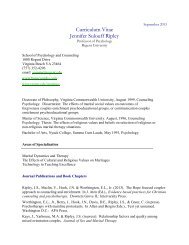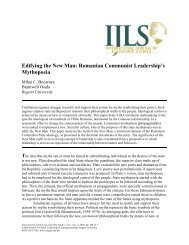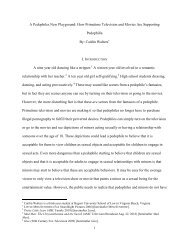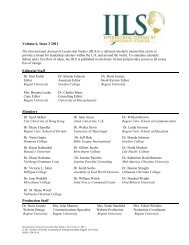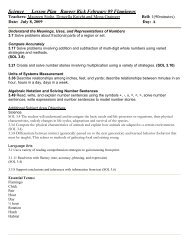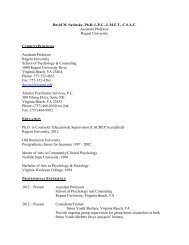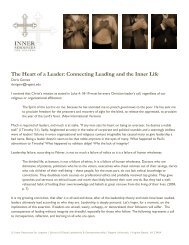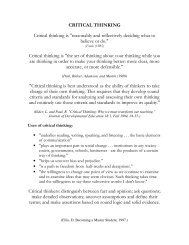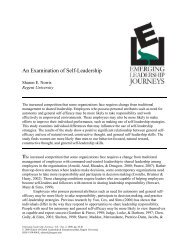CROSS CULTURAL LEADERSHIP
CROSS CULTURAL LEADERSHIP
CROSS CULTURAL LEADERSHIP
You also want an ePaper? Increase the reach of your titles
YUMPU automatically turns print PDFs into web optimized ePapers that Google loves.
Uncertainty Avoidance<br />
This dimension concerns the level of acceptance for uncertainty and ambiguity within a<br />
society. A country with a high Uncertainty Avoidance score will have a low tolerance towards<br />
uncertainty and ambiguity. As a result it is usually a very rule-orientated society and follows<br />
well defined and established laws, regulations and controls.<br />
A low Uncertainty Avoidance score points to a society that is less concerned about ambiguity<br />
and uncertainty and has more tolerance towards variety and experimentation. Such a society<br />
is less rule-orientated, readily accepts change and is willing to take risks.<br />
Read more on Uncertainty Avoidance or Have a look at the world map of uncertainty avoidance<br />
scores.<br />
Masculinity<br />
This dimension pertains to the degree societies reinforce, or do not reinforce, the traditional<br />
masculine work role model of male achievement, control, and power.<br />
A high Masculinity score indicates that a country experiences a higher degree of gender differentiation.<br />
In such cultures, males tend to dominate a significant portion of the society and<br />
power structure. A low Masculinity score means a society has a lower level of differentiation<br />
and inequity between genders. In these cultures, females are treated equally to males in all<br />
aspects of the society.<br />
Read more on Masculinity or Have a look at the world map of masculinity scores.<br />
An Application of the Intercultural Scores - The UK<br />
By way of illustrating how the scores work the example of the UK shall be examined.<br />
First think about what you know or understand about British society and culture and then try<br />
and gage what the scores may be? Would the UK have a high or low Power Distance? Is it a<br />
very individualistic society? Are they a people that entertain risks? Is it a very gender orientated<br />
society? Try and think of the scores you would give to the UK for each dimension (scores<br />
range between 0 and 100).<br />
Power Distance: The UK's score in this dimension is 35. This indicates that rank, status and<br />
inequalities between people are reasonably low. On a macro level this manifests in a number<br />
of ways, such as legislation protecting ethnic minorities? rights. On a micro level this is witnessed<br />
in the office where the relationship between superiors and subordinates is relatively<br />
casual and incorporates little ceremony.<br />
Individualism: The UK scores 89 for Individualism. This is high and therefore points to that<br />
fact that British culture values and promotes individuality. On a macro level we see that the nuclear<br />
family is the more predominant form of basic social structure. On a micro level, in the<br />
business environment the individual may be more concerned with themselves rather than the<br />
team.<br />
Uncertainty Avoidance: For this dimension the UK scores 35 which is quite low. This means<br />
British culture is relatively open to taking risks and dealing with change. On a macro level this<br />
can be seen in the constant revision of laws and government structures. On a micro level, conflict<br />
or disagreement in the workplace, even with superiors, is considered healthy.<br />
Masculinity: The UK scores 66 which indicates that it is somewhere in the middle. This may<br />
reflect the fact that British society and culture aims for equality between the sexes, yet a certain<br />
amount of gender bias still exists underneath the surface.<br />
1) If you are playing the Intercutural Awareness game you can now proceed to read the Intercultural<br />
Awareness Rules or go straight to the Intercultural Awareness game.<br />
2) If you are using the graph tool please go back to Intercultural Business Communication.<br />
Source: http://www.kwintessential.co.uk/intercultural/dimensions.html



